[Abstract] In view of the structural features and construction difficulty of large cantilever, large span, and one-way bracing in the steel structure project of Nanchang International Sports Center Stadium, the key techniques and difficulties of high-altitude block installation method, structural closure, and overall unloading are introduced in detail. , And through the finite element simulation analysis of the entire construction process, it is proved that the technology is efficient and reasonable, guarantees project quality and construction safety, and provides a certain reference for the construction of such stadiums. 1. Project Overview The Nanchang International Sports Center Stadium covers an area of ​​67,248m2, with a total construction area of ​​82,742m2. The stadium can accommodate up to about 60,000 spectators and is a round building (see Figure 1). Figure 1 Nanchang International Sports Center Stadium The steel structure roof cover of the stadium is projected into a ring shape, the outer ring is circular, the inner ring is elliptical, the north-south direction is "saddle-shaped", and the structure is biaxially symmetrical. The outer ring diameter was 287.8m, the inner ring lengthwise (south-north, y-axis) was 212m, and the short-term (east-west, x-axis) was 141.7m. The stadium steel structure adopts a 96-inch radial main truss, 5-turn truss, partial truss truss, "V"-shaped support and one-way bracing, and 192 steel casting nodes to form a space tube truss structure (see Figure 2a). The radial main truss has a maximum width of 7. 0 m (see Fig. 2b), a minimum width of 2.0 m, a maximum cantilever of 47 mm for the radial truss, and a maximum point elevation of 51.85 m for the truss. The truss members are round steel pipes, the material of which is mainly Q345B, and the steel used for the entire stadium steel structure is about 8 000 tons. 2, engineering features and difficulties Nanchang International Sports Center stadium shade steel truss roof smooth lines, like a rotating water meteor, to reflect this architectural effect, to ensure the smooth appearance of the steel structure curve is one of the key technologies of this project. The height of the main stadium is high, the highest point elevation is 51.85m, and the lowest elevation is 34.50m. Its upper structure is supported by 96 V-shaped columns, and the maximum cantilever width of the east-west radial truss is 47m. The south-north radial truss cantilever length Up to 27m, at the same time, the shelter is a closed structure with a perimeter of about 800m, and the ceiling trusses are arranged unidirectionally between the upper and lower strings. The large cantilever, large span, one-way bracing composed of space tube truss structure, put forward higher requirements for structural construction technology. Figure 2 Stadium Structure Combined with the characteristics of the project, through the comparative analysis of various construction plans, the use of high-altitude block lifting method for construction. The difficulties in structural construction mainly include: 1 The overhang span of the steel truss structure of the canopy structure is large, and the vertical deformation is large. In order to ensure the smoothness of the structural shape and shape, it is required to design the structure in advance; 2 This project has a large amount of ground assembly, and the amount of ground assembly accounts for about 75% of the entire project. Therefore, the precision of surface assembly is the key point of the project. 3 The structure height is high, the weight of the lifting block is large, the stability during the lifting is difficult to control, and the requirement for temporary support is high; 4 It is difficult to control the deformation before the installation of the block member in position, the measurement positioning is difficult, and the installation accuracy is easily affected; 5 This structure has a large continuous length and is completely closed. It is necessary to fully consider the accumulation of the installation error of the annular structure. At the same time, the steel structure shelter and the lower concrete column are fixed by bearings. If the overall construction of the structure is not equipped with expansion joints, the temperature difference during the construction process will change. It is unfavorable to the installation accuracy and the safety of the use of the structure, so the temperature control of the closure of the canopy and the closure of the closure is critical. 6 The overall unloading of the cantilevered structure will result in large deformation of the structure under the action of the weight of the large cantilevered structure. Improper unloading will result in the destruction of the structure and the support frame. In order to make the shelter structure gradually enter the design stress state, the load of the unloading process support frame increases. Step-by-step, step-by-step unloading, so the construction simulation analysis and unloading sequence control of the unloading process is the key to the construction control of the project. 3, high altitude block lifting analysis 3. 1 advantages and disadvantages of high altitude block lifting method Advantages: 1Steel components assembled on the ground, reducing the amount of high-altitude operations and the amount of overhead operation scaffolding, improve the construction quality, work efficiency and construction safety, is conducive to civilized construction, and easy to find problems and deal with problems; 2 The construction surface of the main body of the steel structure was enlarged, the efficiency of the use of machinery was improved, and the construction progress was accelerated. Disadvantages: 1 When dividing and lifting blocks, it must be ensured that the block should be a geometrically invariant system, with little change in stiffness, stress and deformation after lifting; 2 The weight of the lifting block is large, and the requirements for the crane are high; 3 During the construction process, multiple coordinate conversions are required. The ground assembly increases the difficulty of measurement and improves the requirements for the site. At the same time, it is necessary to increase the temporary installation of the tire frame, calculate all kinds of deformation in advance, and take anti-deformation measures; 4 increase the difficulty of lifting, due to lifting more pieces of bar, the center of gravity is difficult to grasp, the location of the off point, the number of lashing methods and sling size must be calculated to implement. 3. 2 truss ground assembly (see Figure 3) Figure 3 Truss Ground Assembly The large amount of assembly welding in this project is an important precondition and guarantee for the smooth installation of subsequent steel structures. How to ensure the accuracy of the assembly of steel components on the ground is crucial. Therefore, according to the characteristics of the steel structure of this project, the truss shall be assembled as follows: 1 The assembly site must be set up to meet the requirements and meet the requirements for the stacking of components, cranes and trucks. The reasonable arrangement of assembly sites will directly affect the construction progress and the level of safe and civilized construction management. 2 The installation of the assembled tire frame mainly meets several principles such as strength, stability, and convenience for on-site assembly and versatility. According to the physical characteristics of the components, different assembled tire frames are set. After analysis, there are five types of main assembled tire frames: Off-site combination units to assemble tire frames, off-site temporary shelving tire frames, off-site plane truss assembled tire frames, and on-site combination The unit assembles the tire frame and temporarily suspends the tire frame. After assembling the tire frame, check the position, radian, and angle of the tire mold according to the construction drawings, and reassemble the components after retesting. 3 The truss assembly process is carried out in the order of first chord, upper chord, web truss, and last two trusses between plane truss and truss. To reduce the deformation of the truss in the hoisting process and to protect the base metal, the truss is held at the end of the truss. In the form of temporary reinforcement rods. And use the total station to accurately locate the coordinates of each node of the truss. After the trusses are assembled on the tire frame, all restraints on the trusses are released and the truss is in a free state. In this state, the dimensions of the truss are measured and a section acceptance is performed. 3. 3 truss block hoisting conditions The steel roof of the stadium is composed of a 96-inch radial main truss. In order to ensure the overall stability and deformation of the hoisting blocks in the hoisting process, the distance between the segmented points is 500 to 800 mm, and the main truss is used every two turns. For an assembled whole, each assembly is divided into three pieces (see Figure 4a) and two pieces (see Figure 4b) of the lifting elements according to the lifting weight and the number of components. Figure 4 shows the truss block The most complex first stage outer ring lifting unit in the steel structure project of the stadium has a space of 8m in width, 28m in height, and a weight of 22t. The lifting ropes are set at 4 suspension points according to the most unfavorable conditions. Using finite element software Midas / Gen analysis and calculation, the results show that the lifting unit in the lifting process maximum stress 76. 4N / mm2, far less than the allowable stress 310N / mm2, indicating that the block unit in the lifting process is in the elastic deformation stage, to meet the stress Requirements, structural safety. This lifting method brings certain difficulties to the installation. In particular, the second sub-block unit of the outer ring in Fig. 4a is required to be connected with the first sub-block unit of the outer ring and connected with the V-shaped column below it in the high-altitude positioning. The phenomenon of misalignment may occur. Therefore, certain measures must be taken to adjust the positional deviation of the free end of the block unit to ensure the accuracy of the high-altitude positioning of the bar and to facilitate the positioning of the welding, so that the installation quality of the bar can meet the requirements of relevant quality acceptance standards. In order to achieve the best installation effect, chain-assisted control is used in the hoisting process of all block units. All the first block units of the outer ring are equipped with cable wind ropes after the initial installation to reduce deformation and improve installation accuracy. According to the above paragraphs, the main hoisting equipment for off-site truss is 200t crawler crane, and the main hoisting equipment for yard truss is 300t crawler crane. According to the steel construction drawings, the stadium is divided into Zone 1, Zone 2, Zone 3 and Zone 4 (see Figure 5). The overall sequence of the steel structure installation in this project is analyzed as follows: District 1 and District 2 will be synchronized for construction first; and District 3 and District 4 will be followed by construction. Figure 5 Construction sequence of the stadium 3.4 Temporary support design The design and layout of the support frame mainly consider: 1 The safety factors of the structure lifting process and the most unfavorable conditions that the structure bears when unloading; 2 As far as the civil engineering site layout is concerned, it should be set on the concrete stigma. Based on the above characteristics of the installation of the steel structure and the mechanical characteristics of the structure, there are 96 temporary supports at the bottom of the main truss of the inner ring. The support frame selects the company's patented product “standard section of the fabricated lattice load-bearing bracketâ€. Firstly, adjust the truss position with jacks, and pre-start the inner ring trusses according to the design check. After adjustment, jacks can be extracted and the trusses can be fixed by the positioning devices on both sides. When the support point is not in the vertical pole position, Temporary stiffeners should be added (see Figure 6). After the main steel structure of the stadium has been installed and completed, and the unloading is successful, the support frame can be removed. Figure 6 temporary support tire frame 3.5 Structures According to the overall construction sequence of the steel structure hoisting, when the steel structure of the shelter is hoisted, the construction sequence from the middle to the north and south ends (that is, the direction from the maximum elevation of the east-west structure to the north-south level of the structure minimum elevation) is adopted. The continuous length of the steel structure of the shelter is approximately It is 800m and cantilevered in the yard. The maximum width of the shelter is 64m and the maximum cantilever is 47m. The continuous length of the structure is large and completely closed. At the same time, the steel structure canopy and the lower concrete column are fixed by bearings. If the entire construction of the structure is not equipped with expansion joints The temperature difference during the construction process will be detrimental to the installation accuracy and the safety of the structure during use. The canopy closure joint is set at the lowest elevation of the structure in the north-south direction of the structure. According to the calculation, the stress on the bar is relatively small, and the closing temperature is controlled at 20 to 25°C. The initial stress generated during the installation of the structure is minimum. 4, the overall uninstall The supporting demolition process is a structural system transformation process. The structural deformation and internal forces are redistributed. The fulcrum reaction force supporting the tire frame will also change with the unloading scheme and the unloading sequence. In order to make the structure gradually enter the design force state and support frame During the unloading process, no damage occurs, and a reasonable unloading sequence and unloading level must be selected, and the safety of the unloading stage structure is calculated and analyzed. The principle of dismantling and dismounting is: based on structural calculation, with the purpose of structure and supporting safety, with deformation coordination as the core, and real-time monitoring as a means. According to this principle, the unloading method is determined by calculation. The unloading method is divided into equal ratio method and isometric method. Hydraulic jacks, screw jacks, air cushions, etc. can be used. When the steel structure of the stadium shed is hoisted, it is a space structure system in which temporary support tire frame supports are installed under each radial main truss. After the main steel structure is installed and all welding work is completed, the shed is closed and the The main structure and the sub-structure are all synchronously uninstalled. The unloading method of the support frame adopts a step-by-step method and a grading method. According to the simulation analysis of the unloading process based on the finite element software Midas /Gen, the maximum vertical displacement of the structure after complete unloading is 66 mm, which occurs at the temporary support of the inner ring at the short end and the vertical displacement of the inner ring at the long end support. Relatively small, only 28mm. This project utilizes jacks for unloading using the equidistant method (see Fig. 7a). According to the agreed unloading volume of 10mm/time, 96 jacks are unloaded at the same time. The principle of overall synchronous unloading is: unified command, step-by-step, real-time feedback. When the jack stroke is not enough, use the two sides of the fixed device to switch, repeat the above process until the bottom of the truss and the jack and the two sides of the fixture is completely detached, complete the unloading (see Figure 7b). Figure 7 Overall uninstallation 5, construction monitoring The purpose of construction monitoring is to track the deformation, stress changes, and vibration, temperature, etc. of key parts during the construction process in real time. By collecting information in real time, it can determine whether the original expectations are consistent with what actually happened, so that they can be adjusted in time to ensure the accuracy and security of the implementation of the structure. Deformation monitoring includes axis and elevation monitoring. Axis monitoring is to observe the deviation of the position of the axis of the constructed structure relative to the position of the predetermined axis, and use the total station to measure. Elevation monitoring is to observe whether the structure height reaches the design elevation and use a precision leveling instrument to measure. The roof line of the stadium is smooth and there are a large number of multi-tube intersecting nodes, so the installation accuracy is extremely high. The monitoring follows the "total to partial" principle and adopts the "inner and outbound joint control method". The building positioning axis allows the deviation from the theoretical axis quantity to be L/20 000 (L is the positioning axis length) and should not exceed 3.0 mm. Vertical and horizontal truss height allowable deviation 10mm, vertical center deviation allowable deviation of 10mm (relative error). Stress monitoring is a very important part of the construction. Its purpose is to grasp the stress changes of key components during the construction process. The problems should be discovered in time, and measures should be taken to ensure that the critical parts of the components do not exceed the specified values ​​to ensure the safety of the structures. The stress monitoring sites are generally set at the maximum stress point, the maximum point of stress change, the key construction nodes, and the points reflecting the environmental characteristics. During the overall unloading of the structure, the project analyzes measured strain data and compares it with theoretical data. It is found that the two sets of data are basically consistent and the unloading scheme is safe and reasonable. 6. Conclusion For the structural features of the large cantilever, large-span, one-way bracing and other structural features of the steel structure of the Nanchang International Center Stadium, the application of the high-altitude block-based construction scheme is reasonable and efficient. It is 35 days shorter than the original schedule to ensure project quality and construction safety. At the same time, it provides a certain reference for the construction of such stadiums. Taihe Fangyuan Muye Co.,Ltd , https://www.fyofficefurniture.com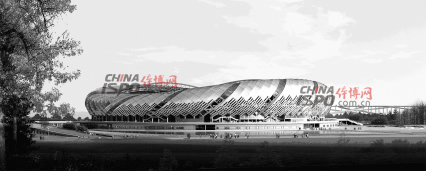
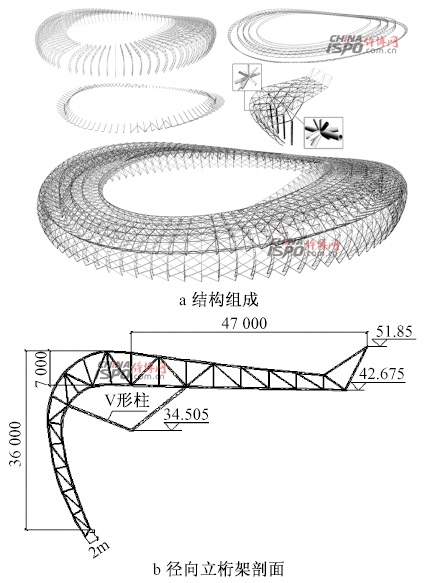

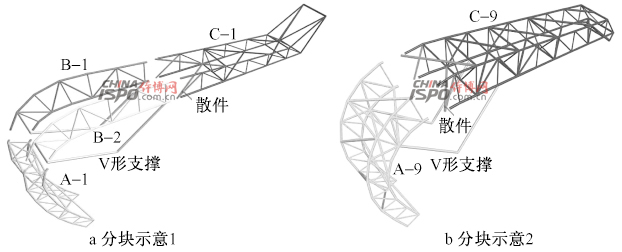
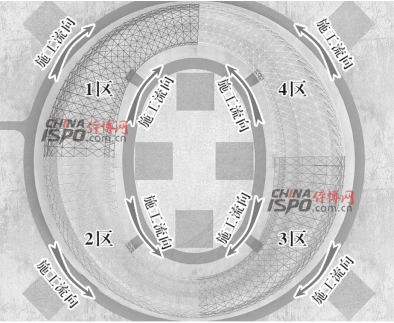
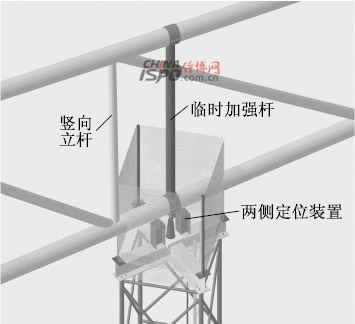
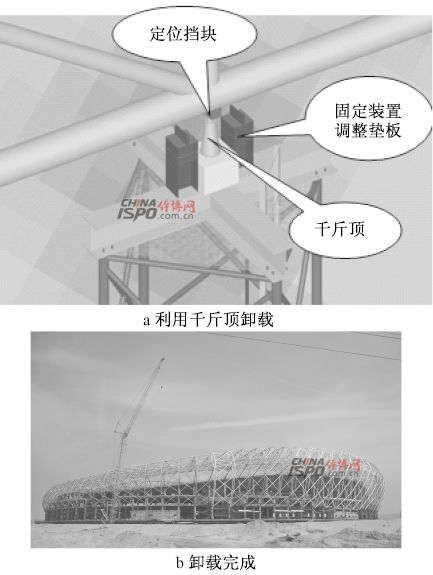
Key Techniques for Construction of Large Cantilevered Steel Truss in Nanchang International Sports Center Stadium